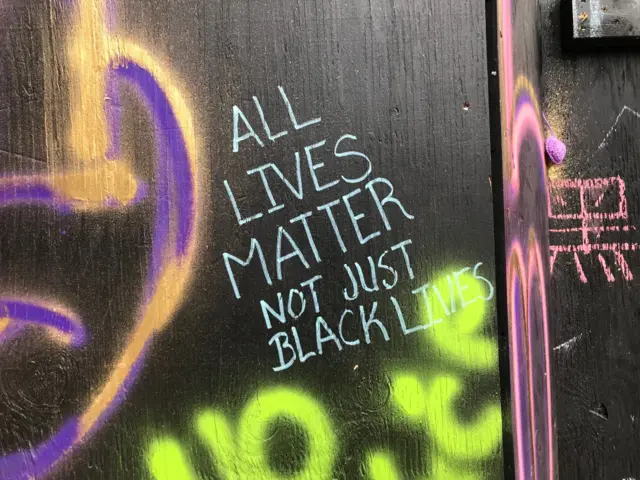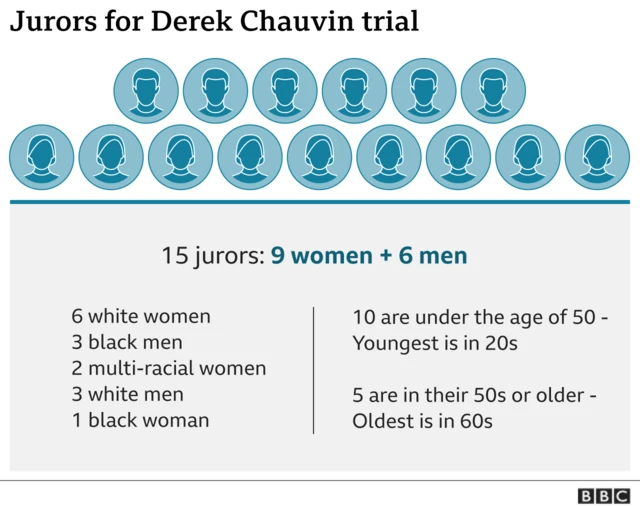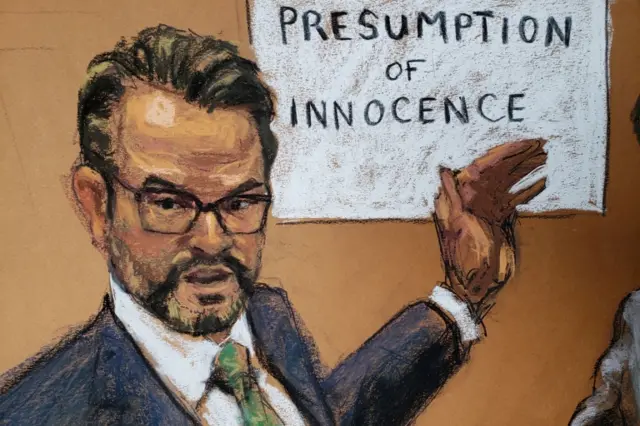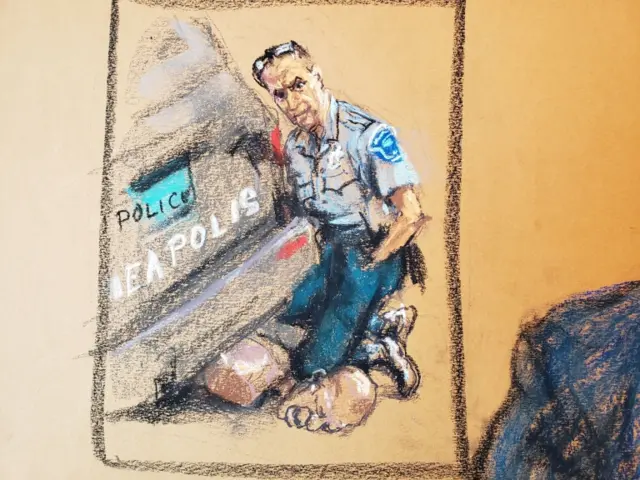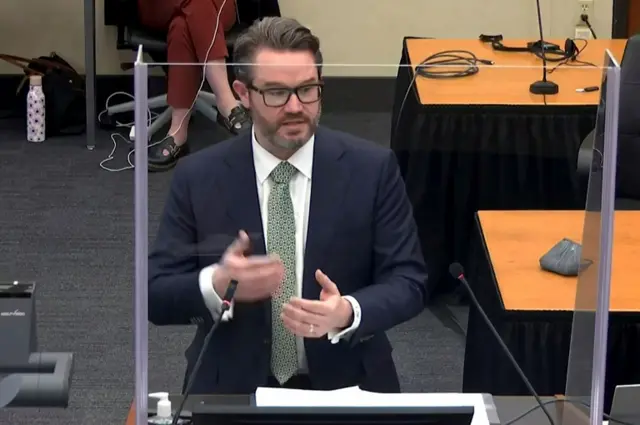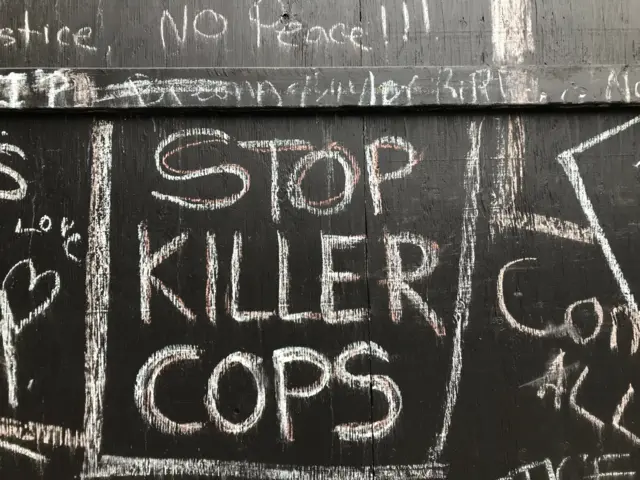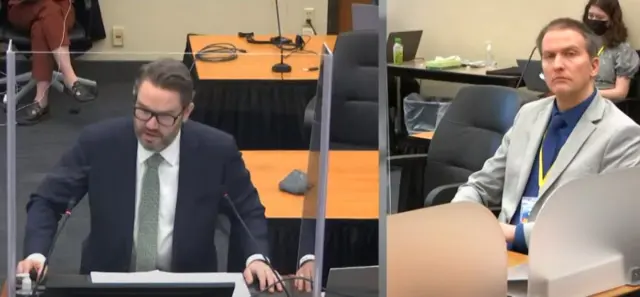The final argument: 'You can believe your eyes'published at 21:23 BST 19 April 2021
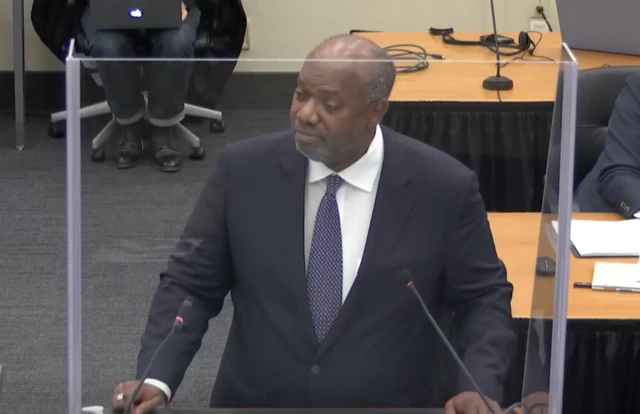 Image source, CourtTV
Image source, CourtTVProsector Jerry Blackwell is honing in on the concept of "reasonable force" - a key theme of the trial.
The defence has argued that Chauvin acted as any reasonable officer would. Blackwell's response and refrain to the jury now is to believe the evidence, and to believe themselves.
"Here what you saw wasn't reasonable," Blackwell says.
"The whole narrative cut off before we got to the point that Mr Floyd was not moving, that he was not conscious, that he did not have a pulse and that Mr Chauvin was still on top of him even when the EMTs showed up," Blackwell says.
"You can believe your eyes, ladies and gentlemen. It was what you thought it was, it was what you saw. It was homicide."

